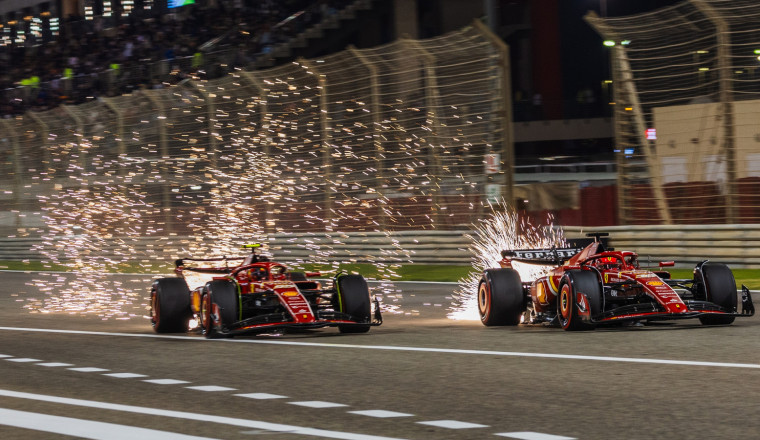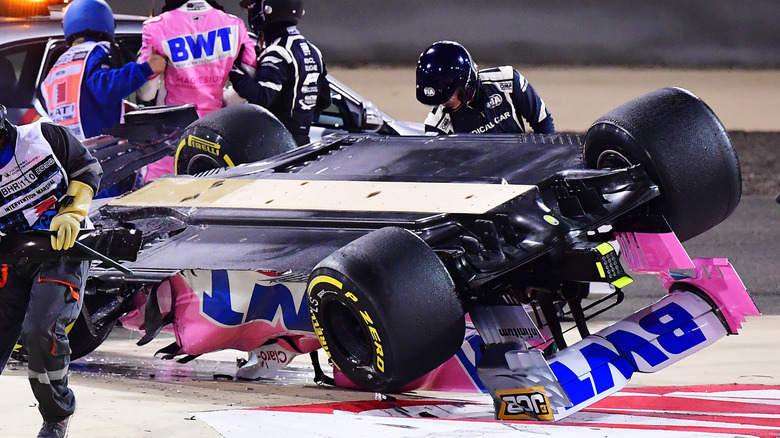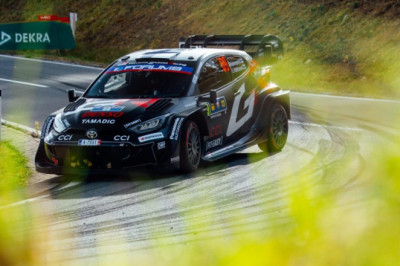
That shower of sparks trailing a modern Formula 1 (F1) car isn't just for show — though you can bet Brad Pitt's 'F1' movie will milk every slo-mo ember for all it's worth. It's one of the most superb visuals in all of motorsports — a fiery rooster tail. But those sparks aren't some pyrotechnic trick like at a Monster Jam show. They are a very real, very physical result of a car's underbelly kissing the road surface.
The short answer is a piece of wood — well, not just wood anymore. It's a plank, technically speaking, and it's the official hall monitor of an F1 car's ride height. This plank is at the center of a long battle between rulemakers trying to keep cars safer and teams who would bolt their drivers to the pavement if it meant finding another tenth of a second. The sparks you see are the incandescent evidence of that battle being waged, millimeter by millimeter, on every single lap.
 Pool/Getty Images
Pool/Getty Images
On the underside of every F1 car lies a long, flat plank made of a glass-reinforced composite called Permaglass. Its job isn't to make the car faster — it's for safety. Introduced back in 1994 to enforce a minimum ride height and limit the effectiveness of dangerously powerful aerodynamics.
Here's the twist: embedded within this safety plank are several small metallic plates called skid blocks. Since a rule change in 2015, these blocks must be made from a titanium alloy. Because that is the safest thing to do — right? Nope. The governing body, the FIA, later admitted to simply wanting some pizzazz, especially for the growing number of night races.
So, while the skid blocks do protect the plank from wear, their secondary job in modern F1 is to look cool. They hit the ground because today's "ground effect" cars generate a massive aerodynamic force that sucks them to the track, a force that gets stronger the lower the car is. The sparks aren't a sign of a problem; they're a sign the car is working exactly as intended.
For F1 teams, those sparks represent a high-stakes game of millimeters. The rules are brutally simple: the 10-millimeter plank can only wear down by 1-millimeter over a race weekend. If it's any thinner, the car is disqualified — no ifs, ands, or buts. This means teams are constantly adjusting — and gambling, running the car as low as possible for maximum performance without grinding away too much of the plank. History is littered with teams who got this math wrong, with both Lewis Hamilton and Charles Leclerc getting disqualified from the 2023 U.S. Grand Prix for that very reason.
The mandated switch to an alloy for the sake of spectacle led to an unforeseen hazard, however: the white-hot metal shards were so effective at starting fires in the trackside grass that multiple sessions had to be red flagged and stopped, such as the 2025 Japanese Grand Prix. This even led to the FIA demanding teams test steel skid blocks later in the year, in hopes of avoiding trackside fires. It's a perfect story: a safety device was turned into a mandated spectacle, which then created its own, new safety problem. That's the messy, brilliant friction that perfectly defines modern Formula 1.















